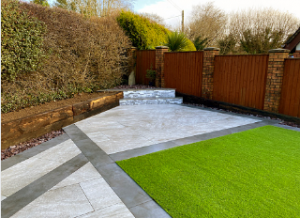How Artificial Turf Is Made and Tested
Artificial turf can be environmentally damaging because it requires supplemental water to keep it cool. As a result, it heats the surrounding buildings, communities, and plants. Synthetic material can also harbour harmful microbes. It also contributes to the development of the heat island effect, a warming effect that can affect an entire community. In addition, hosing down the turf sends pollutants into nearby waterways. It is in direct conflict with the principles of a watershed approach.
 Quality checks for artificial turf
Quality checks for artificial turf
One test performed to ensure the quality of artificial turf Adelaide involves a G-max test. This test simulates the impact of cleat spikes on a field. The test involves releasing a 20-pound flat-ended missile onto a test area and observing how much of it the turf system absorbs. The turf system should have a G-max value under 200 G’s to meet this test. The Synthetic Turf Council recommends a score of 165 G’s or less.
Pollutants
Unlike natural grass, artificial turf Adelaide is a manufactured product of petroleum-based materials. As such, it releases pollutants into the atmosphere when it is used. Whether the turf is used on a field or dumped in the woods, its pollutants are likely to harm our environment.
These substances include PFAS, or per and polyfluoroalkyl, linked to cancer. These chemicals have a long history of environmental damage and are known to affect human health negatively. Researchers have discovered that these substances are present in the plastic backing of artificial turf and that they are present in significant quantities in artificial grass blades. Laboratory tests conducted by Public Employees for Environmental Responsibility and the Ecology Center have revealed a wide range of chemicals in synthetic turf. The chemicals are known to be highly toxic. Moreover, children are particularly vulnerable to these chemicals.
Infill
The infill of artificial turf is an essential component of a sports field. The material helps reduce forces by absorbing impact. Typical construction methods in Germany reduce the number of infill granules per square metre by forming an elastic layer underneath the surface. Other European countries use different construction methods.
Many infill materials are made of plastics. These plastics are often close to water drainage systems, and their release into the environment is a concern. However, some governments are trying to find better alternatives, like a cork. However, cork is a low-density material and therefore requires extensive maintenance.
Another environmental concern is the infill of artificial turf. The materials used in fill are harmful to the environment. They contain heavy metals and organic pollutants. In addition, they can leach into the rain and endanger humans.
Cost
The cost of artificial turf can vary widely. The cost per square foot of artificial turf will decrease as the job size increases. However, it is crucial to consider your budget and other factors when estimating the price. For example, if you want to install turf around a garden feature, you should expect to pay a higher price than if you only plan to lay a rectangular lawn. Also, if you want to install the turf yourself, you will have to spend more time and money preparing the area.
You can often salvage some of the existing components if renovating an existing sports field. It’s often possible to preserve the base layer and the drainage system, which could lower your overall costs. You’ll want to speak with an expert who understands sports field soils to learn about this option and how to save money.
Installation
Before installing artificial turf, you must prepare the area. During the initial phase of installation, you can use a rake to level the ground evenly. If necessary, you can also use a vibrating compactor to compact the base material. Using a thin layer of sand is also essential to make the area more level and even. Once the area has been prepared, it is time to lay down the artificial turf.
Before installing artificial turf, it is essential to check if your neighbourhood has rules and regulations. For example, your HOA may only allow you to install the turf in your backyard, or it may require that you use a particular type. If you are unsure of the rules in your neighbourhood, contact the local HOA and ask permission to install the turf.